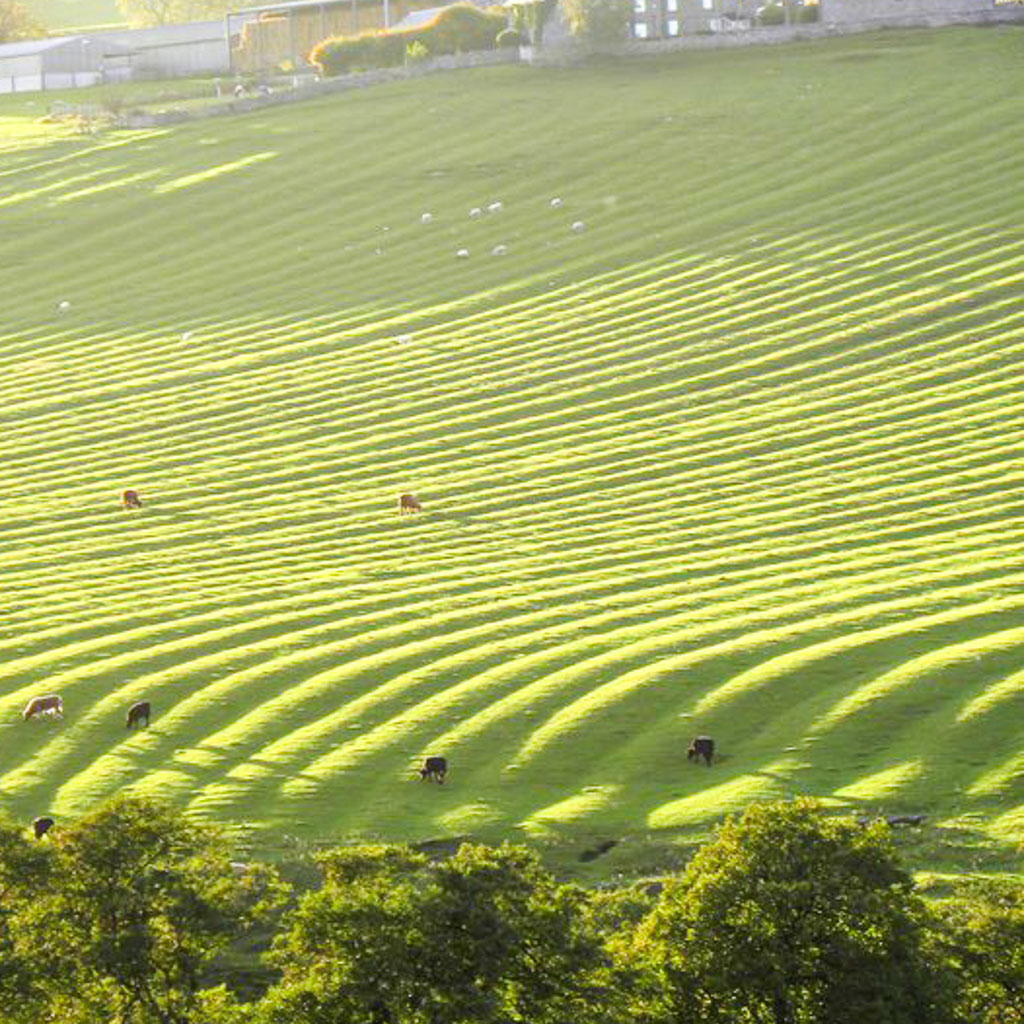These stripy fields fascinate me and show up best in low, late afternoon sunlight. They’re ridge-and-furrow field systems formed by medieval ploughing methods. The plough (back then only a single blade) would be pulled by oxen and turn the soil over onto itself in one direction creating a long hump – the ridge. At the end of the strip, the oxen would be turned around and pull the plough the opposite way turning the soil over and towards the first strip of turned soil. At the end they’d turn again and plough the soil on the outside of the first till, turning the soil toward the first pass and partially stacking it on top. This is repeated on the other side, partially stacking the soil onto the second pass. In all, about six passes would be made, resulting in a fairly wide ridge.
Meanwhile, neighbouring ridges would be formed on either side of this ridge and over the years the ridges would get higher and higher. Between them a long depression is formed – the furrow. This system was developed as a way of ensuring each family in a village had sufficient land to be able to grow the food that they needed – each family had their own ridge. The ridges and furrows would also create a microclimate that helped with crop growing – the ridges would drain better and the furrows would hold water back from running off the land.
The ridge-and-furrow system isn’t as neat and large scale as modern crop production and in some places a modern field may be filled with a patchwork of stripes in many different directions. This has created an agricultural landscape that is difficult for modern machinery to work so they tend to be more common in pasture regions of the country rather than arable regions. They’re not protected unless specifically designated as a scheduled ancient monument, but I think that they’re a really important landscape to retain and protect – they are irreplaceable, beautiful and a direct link to our ancestors and their basic daily lives.
📷 Ridge-and-furrow, Edlingham, Northumberland © Copyright Gordon Hatton;
geograph.org.uk/photo/5955237

